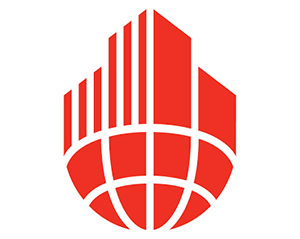![]() The future of Cushman & Wakefield is in the balance. A preferred party to buy the business for as much as £1.3bn could be selected by as soon as the end of this month.
The future of Cushman & Wakefield is in the balance. A preferred party to buy the business for as much as £1.3bn could be selected by as soon as the end of this month.
The 81% owners of the business, the Agnelli family and its investment arm Exor, put their stake up for sale in February in a move that could change the landscape of global real estate.
The bids and pitches being made to the C&W board, its owners and advisers Goldman Sachs and Morgan Stanley will be varied and have hugely differing advantages and disadvantages. But what are the company’s main options?
Option one: a merger with DTZ
ADVANTAGES
TPG-backed DTZ is in the process of raising capital for a bid with a clutch of banks. Such a deal would provide the scale and efficiencies that are becoming ever more necessary to compete in the global property advisory world. There is also a “fear of missing out” factor at play – if C&W does not do a deal with DTZ then DTZ could do a deal with another large firm and push C&W down the rankings.
DISADVANTAGES
C&W’s management has already made clear it would prefer not to do a deal with a rival. Having management on board in the event of a knockout DTZ bid would be crucial in terms of staff retention and maintaining value. The rationale that DTZ needed a merger with C&W to bolster its US presence has been weakened since DTZ’s purchase of Cassidy Turley in January. Overlap is a major concern, although in many markets the combined teams would still be smaller than those at CBRE
or JLL.
Option two: a sale to Fosun
ADVANTAGES
A tie-up with Far Eastern giant Fosun would be a more straightforward proposition than a merger and avoid overlaps. The £33bn conglomerate has incredible firepower and would be able to fund aggressive expansion. Its links to Asian property investors could prove invaluable for deal flow in and out of the continent. Fosun has also proved its desire to be a long-term player in real estate in the past year, making substantial investments in the UK, Germany and Australia.
DISADVANTAGES
A deal with Fosun would not make C&W any bigger in the first instance and the initial opportunity to gain ground on JLL and CBRE would be lost. Conflict of interest issues could arise where Fosun makes direct purchases. Cultural differences could also be a risk. One rival chief executive said: “There is a huge gulf in terms of how businesses operate between China and the West in terms of standards of practice and that could make clients wary.”
Option three: a management buyout
ADVANTAGES
The management of the company already own a 19% stake in the firm and a buyout would see its staff fully aligned to its ownership. It would also maintain a steady ship in terms of structure and avoid any stand-offs with new owners. Such is the strength of the debt capital markets and the cheap finance that is available that the chances of successfully undertaking a buyout are at their highest at this point in the cycle.
DISADVANTAGES
Taking on the debt that would be necessary to undertake such a transaction for individuals within such a partnership could become onerous to the personnel that are part of it. The capacity to continue to raise further funds throughout the cycle to undertake further expansion would also likely be a constraint, certainly compared with the other players wanting to buy C&W. Maintaining partnerships of such scale, with inevitably varied views across different continents, could also be difficult.
Option four: a facilities management merger
ADVANTAGES
Tie-ups between facilities management companies and property advisory firms have become increasingly frequent, culminating in CBRE’s $1.5bn (£985m) purchase of Global Workplace Solutions last month. Companies such as ISS World and Sodexo have the balance sheet to buy C&W and it would give them access to clients at a higher level than that at which they typically engage. Such a deal could result in substantial synergies, allowing C&W to offer a broader suite of services to clients. It would also give the company a steadier, less transactional revenue stream.
DISADVANTAGES
A merger with a facilities management business brings potential reputational risk – if the company becomes associated with lower-margin, lower-skilled work then this could tarnish the company’s overall brand. Creating the synergies that a deal with facilities management can bring about are not straightforward, with some clients picking and choosing different services from different companies. A new team from a facilities management company would also be unlikely to be fully familiar with the workings of a firm such as C&W.
Option five: a private equity sale
ADVANTAGES
Private equity firms flooded with cash are eager to gain exposure to the global upswing in the property industry, as has been proven in the past few years. A deal akin to that led by TPG Capital to buy DTZ last year would provide C&W with substantial capital to expand – private equity firms will always seek aggressive returns over a relatively short period. The expertise that such deals can bring can also be beneficial, such as access to merger and acquisition specialists as well as broader, high-level business connections.
DISADVANTAGES
Private equity firms, by their very business model, are not long-term investors. Being bought by one is never the end of the story and throughout ownership an exit situation always looms. In some instances, although less so during periods of growth, cost -cutting measures are synonymous with private equity ownership. Expansion can also be short-termist and sometimes dramatic changes are undertaken in order to fit in with the business model of the private equity fund being invested, rather than the business itself.











